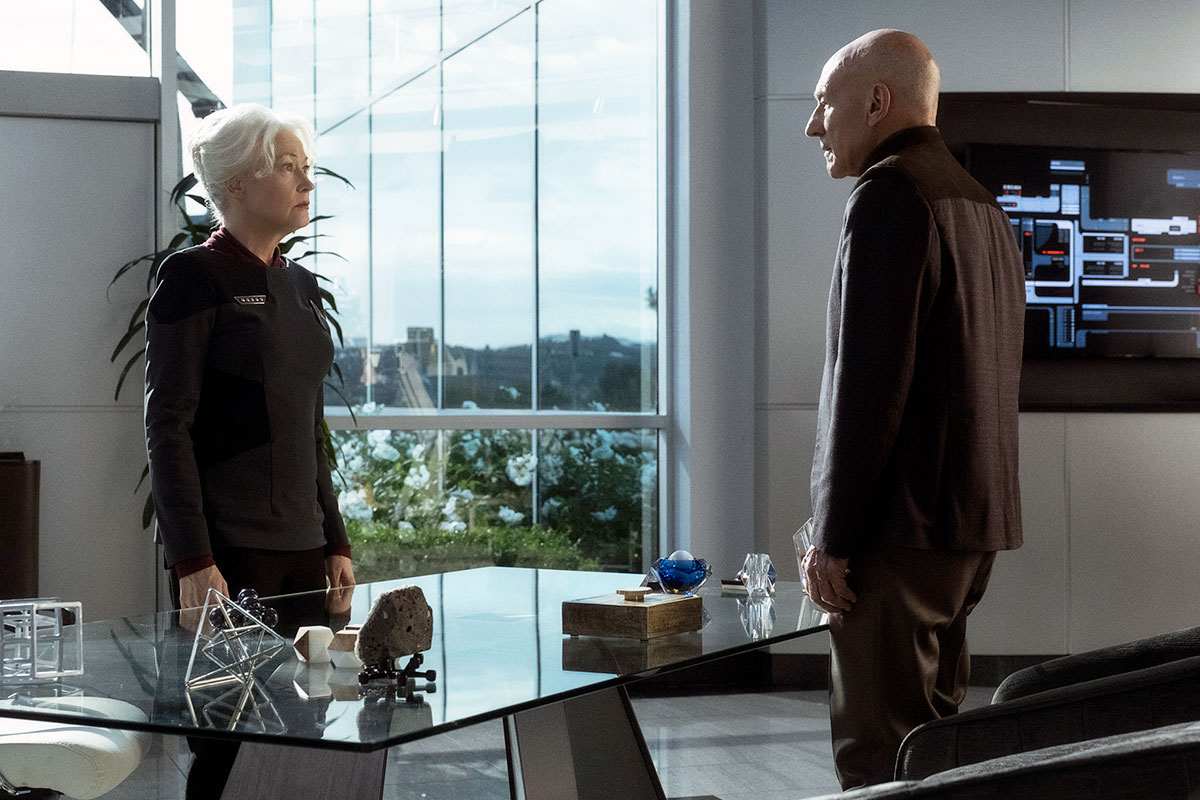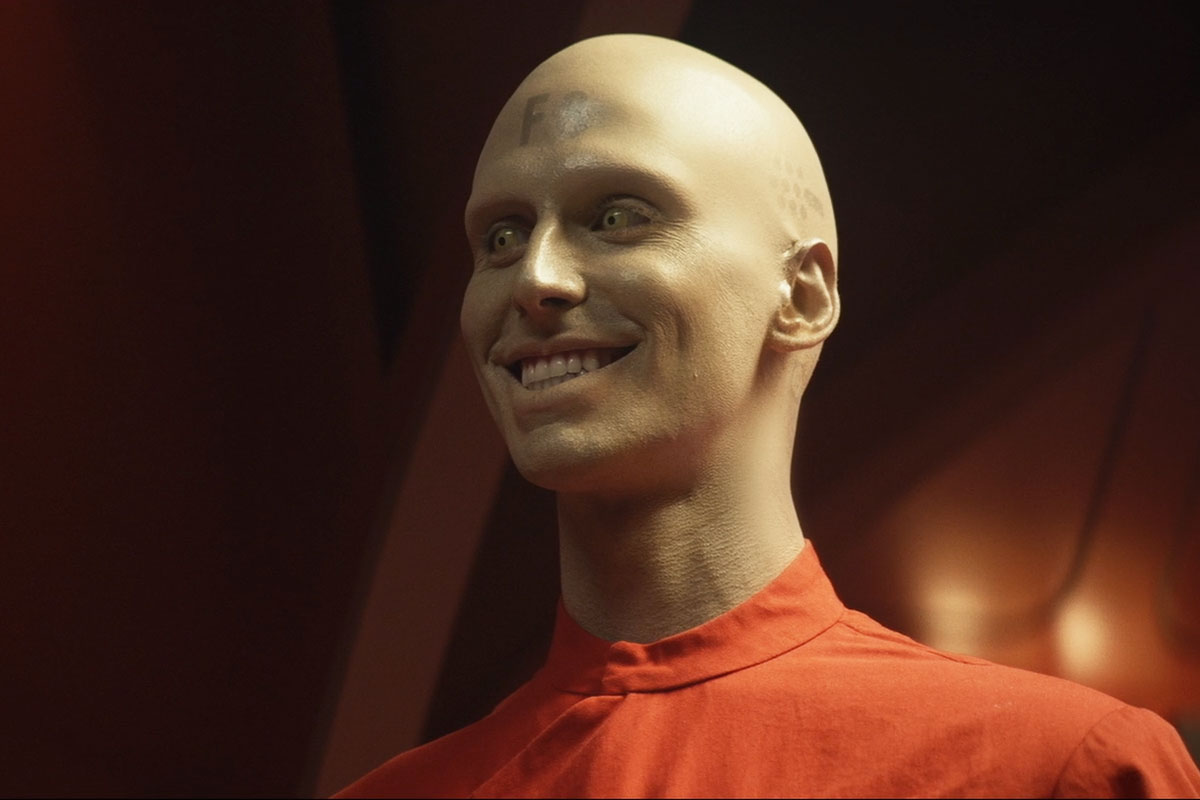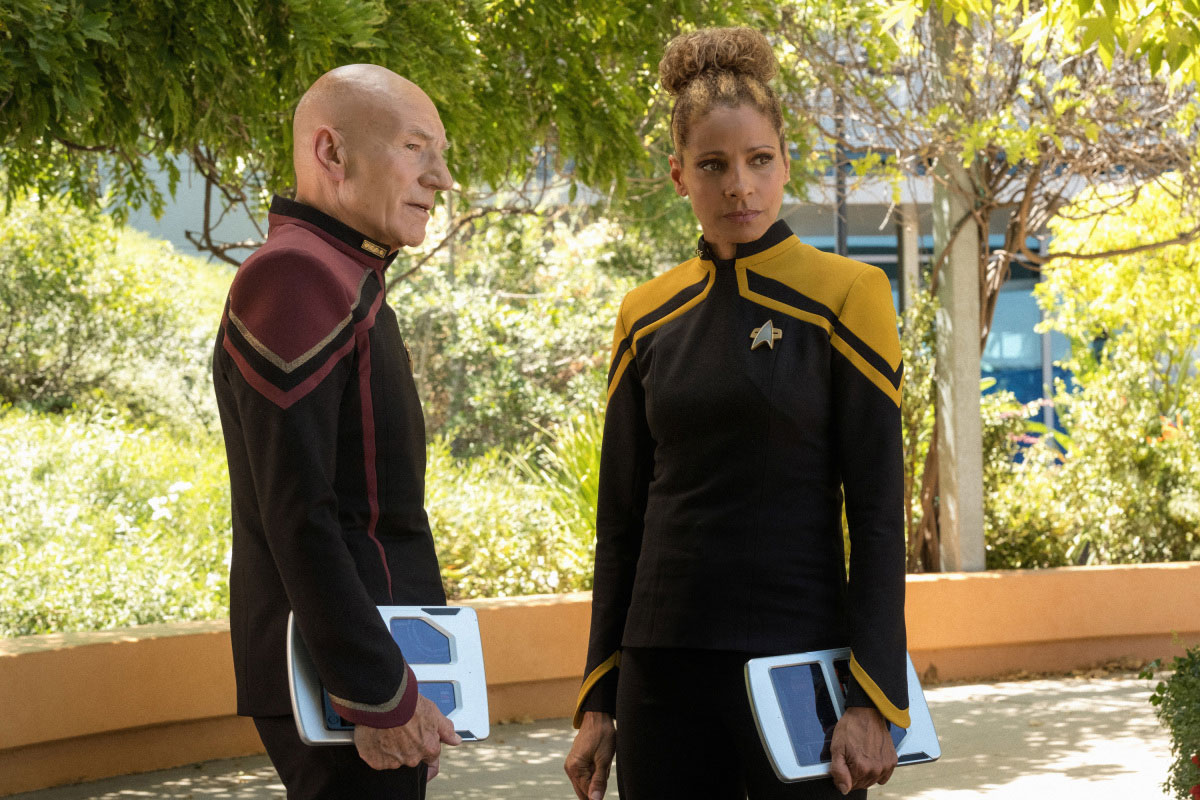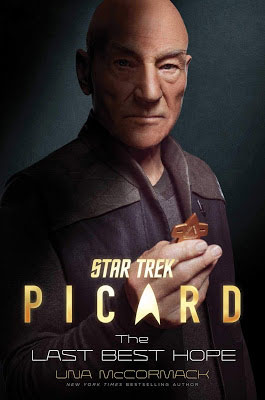The Last Best Hope by Una McCormack is an indispensable companion to Star Trek: Picard, providing a lot of additional context and background for the series and the key event that we have seen only snippets of in the show so far: the years-long evacuation of a large part of the Romulan Star Empire due to an impending supernova.
This novel is a hard reset of the post-Nemesis continuity — as far as the last two decades of Trek books are concerned — matching the new on-screen canon established by Star Trek: Picard almost seamlessly.
Longtime Trek scribe Dayton Ward has said recently that the ongoing “novelverse” storylines that fans have been following since 2001 aren’t finished quite yet, but when it comes to The Last Best Hope, the only requirement for new readers is a familiarity with the opening few episodes of the new television series.
Beginning in 2381 — two years after the events of Star Trek: Nemesis — Captain Jean-Luc Picard of the USS Enterprise-E learns of a terrible secret that will change the course of his life forever: the Romulan sun is going to explode, and the Federation is going to need to make a choice about how to respond. Should they leave their old enemy to fall, or should they extend the hand of friendship and aid?
You all know from watching Picard what the answer is, and what the terrible consequences of that choice are. The book follows Picard from the first moment he learns about the Romulan supernova, all the way through is eventual resignation from Starfleet after the synth attack on Mars — the final scene in the book takes place just moments before Picard and Raffi discuss his resignation in “The End is the Beginning.”
Along the way, we see much more about how the evacuation unfolded, including its early successes — and later defeats. We learn much more about the development of the Bruce Maddox-designed A-500 synths that ultimately went rogue (for reasons still unknown), and the internal politics of the Federation that ultimately led Starfleet to cancel the rescue mission following the Mars disaster. McCormack successfully layers a sense of unease and impeding disaster throughout the book that makes it a deliciously uncomfortable narrative at times.

You might think that sounds like a lot for one book, and it is, but Una McCormack was the perfect choice of author to take on this task, because of the current roster of Trek novelists, she is probably one of the best at really focusing in on the characters and ensuring they have full, rich, internal lives.
The Last Best Hope succeeds not because it is a sweeping epic that covers four pivotal years in the history of the Federation and the Romulan Empire, but because they cover four pivotal years for a core cast of characters, centrally that of Jean-Luc Picard.
Like the show that The Last Best Hope is branded under, this book is a Jean-Luc Picard novel. Picard’s hopes, dreams, successes, and failures over a four-year period are laid bare, building the narrative and providing the reader with significant insights about why, when faced with Starfleet’s decision to cancel the Romulan evacuation, he would walk away from it all.
McCormack has Picard’s voice and character totally down, and even begins to show us some of the ways in which the Romulan evacuation changed his character from the one we last saw in Star Trek: Nemesis into the Picard we reunited with in “Remembrance.” Want to know what Picard thought the first time Raffi called him “JL”? It’s in here.
Telling a story of this scope might have tempted another author to pull in much larger casts of characters, to explore what other fan favorite Star Trek characters were up to during this period and what role, if any, they played in the Romulan evacuation. But the book wisely avoids that — while there are a slight few moments touching on Worf, Riker, Troi, and Beverly Crusher in early chapters, the author focuses on the Star Trek: Picard characters we’ve been following for the past few weeks: Picard, Raffi Musiker, Bruce Maddox, Agnes Jurati, and Kirsten Clancy.

McCormack also follows a thread from the Star Trek: Picard — Countdown comic series by keeping an eye on Geordi La Forge’s work running the Mars shipbuilding project (and his involvement with the synths), as well as introducing original characters of Federation Councilor Olivia Quest, and civilian astronomer Amal Safadi, and a number of Romulan characters involved in the evacuation storyline.
The result of that, hopefully, is that The Last Best Hope will remain consistent as a tie in book regardless of what the TV production decides to explore next in the late 24th century.
Perhaps the most interesting other character in the novel is Bruce Maddox, who we have only met briefly so far in Picard (who seems to have met his story’s end). Maddox in this novel shares a lot in common with the Brian Brophy version we first encountered in “The Measure of a Man,” in that he possesses an almost singular focus on his work to create a sentient android that he is driven almost mad by it.
The book specifically clarifies that the synths working at Utopia Planitia were not sentient — avoiding the “race of disposable people” concern from “The Measure of a Man” — and that they were created out of necessity to speed up shipbuilding for the Romulan evacuation fleet… but that Maddox never considered them to be truly products of his work, and continued to spend considerable time pursuing his own dream of replicating Data.
After the disaster on Mars, it is implied that Maddox’s obsession with sentient androids caused him to lose focus on the synths, leading to the unexplained malfunction that caused them to go rogue — including speculation that they may have “somehow” gained sentience on their own.

If there is one flaw in this novel, it’s not one that the author had any control over. 2009’s Star Trek film established that a star in the Romulan Empire went supernova, threatening multiple star systems in the process. This proposition is a patently absurd product of JJ Abrams’ total lack of care for science… but since it’s part of canon, it has to be weaved into the fabric of both this story and of Picard.
McCormack does the best job she can of making sense of the absurd notion that a single star’s destruction could put an entire empire at risk, starting with the premise that Spock’s vague claims from the film refers to the Romulan home star itself — as opposed to the Hobus star referenced in the old 2009-era Countdown comics. But there’s still a lot of handwaving that McCormack needs to do in order to infer that the supernova threatens multiple star systems.
Her efforts here mostly work, appearing to focus a bit less on the actual percussive force of a star exploding causing a physical destruction of multiple systems and more on the impact of supply chains breaking down throughout the Empire after the homeworlds are destroyed — and how the supernova will severely impact the climates of planets in these nearby systems — but it’s still one of Star Trek’s most eye rolling story devices (from a scientific perspective).
There is a saving grace introduced in The Last Best Hope, however: the narrative teases us with at least one character drawing the conclusion that the supernova was not a naturally occurring event, which could account for both the lack of warning about the disaster, and the severity of its after-effects.

I hope that will be explored either in the show or future novels, along with several other crucial details from the pre-Picard era that remain unexplored, like the supernova event itself. The narrative of the story ends shortly before the star’s explosion — and the book’s epilogue picks up some time after.
You might be wondering how Spock’s story from Trek ’09 ties in here, but aside from a brief cameo from the Vulcan during the evacuation storyline, that isn’t touched upon here. Perhaps we will finally learn Spock’s perspective in a future novel. But, as I mentioned before, part of the power of this book is that it takes a focused approach to such an epic tale, and if they tried to build in too much — like Spock — it may not have ultimately been as successful.
The Last Best Hope is a strong start for a new 24th century continuity built around the events of Star Trek: Picard. If the snippets of flashbacks from Picard’s first five episodes have left you wanting more information about this crucial chapter in Picard’s life, then look no further than this book.
Here’s hoping we don’t have to wait too long for another novel to continue filling in the 14-plus years of background details yet to be explored.

